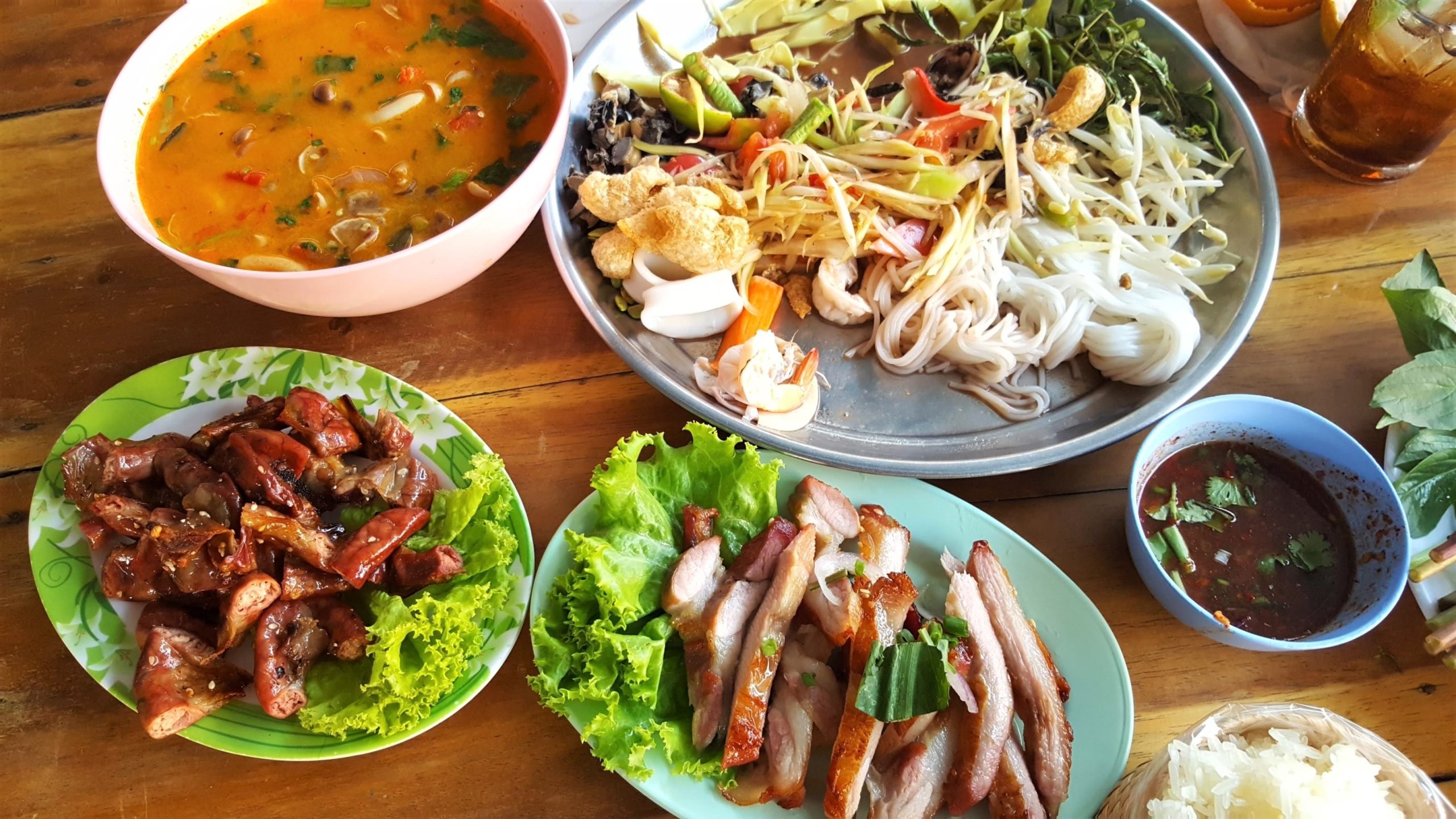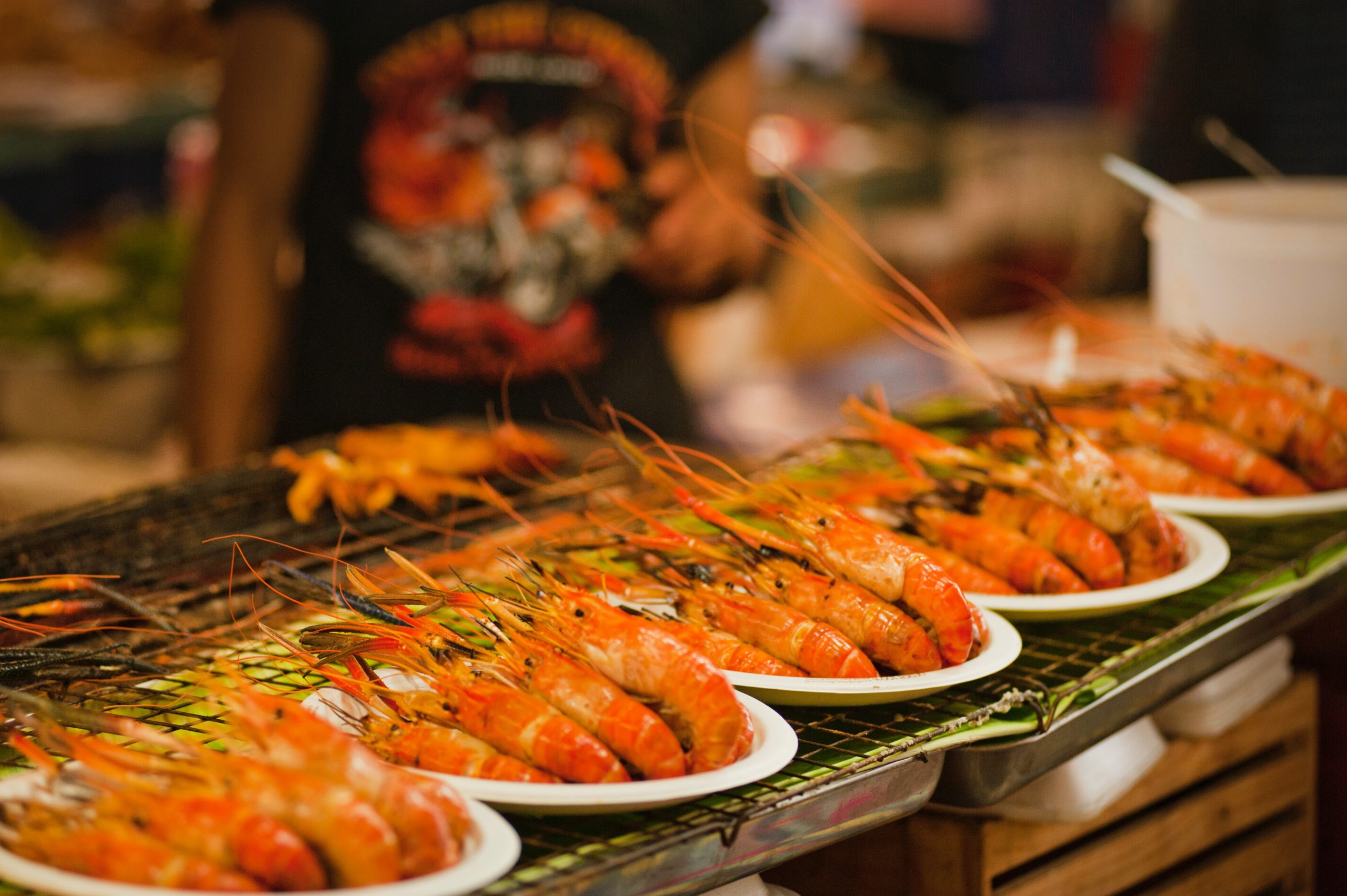Exploring the Flavors of Thai cuisine: A Culinary Journey
When it comes to culinary adventures, few countries can rival the vibrant and diverse flavors of Thailand. Nestled in the heart of Southeast Asia, Thailand offers a delectable tapestry of dishes that tantalize the taste buds, from the fiery heat of chili peppers to the harmonious blend of sweet, sour, salty, and umami flavors. Join Green Sun Travel on a mouthwatering journey as we delve into the world of Thai cuisine, uncovering the secrets behind its popularity, exploring its rich history, and savoring some must-try dishes along the way.
Thai Cuisine: A Symphony of Flavors
Overview and History
Thai cuisine is a complex and dynamic fusion of flavors, influenced by various cultures and regions throughout history. It can be divided into four distinct regional styles: Northern, Northeastern (Isan), Central, and Southern Thai cuisine, each with its own unique ingredients and preparation techniques.
- Northern Thai Cuisine: Known for its aromatic and mild flavors, Northern Thai cuisine features dishes like Khao Soi (curry noodle soup) and Sai Ua (spicy sausage). The region’s cooler climate also influences its use of herbs and vegetables.
- Northeastern (Isan) Thai Cuisine: Isan cuisine is characterized by its bold and spicy flavors. Dishes like Som Tum (spicy green papaya salad) and Larb (spicy minced meat salad) showcase the region’s love for chili peppers and fermented fish sauce.
- Central Thai Cuisine: The cuisine of the central region, which includes Bangkok, is the most well-known internationally. It features dishes like Pad Thai, Tom Yum Goong (hot and sour shrimp soup), and Green Curry. Central Thai cuisine is known for its balance of sweet, sour, and salty flavors.
- Southern Thai Cuisine: The southern region’s cuisine is influenced by its coastal location, incorporating a variety of seafood and coconut-based dishes. Spices play a significant role, creating dishes like Massaman Curry and Gaeng Som (sour curry).
Thai cuisine’s history is deeply intertwined with the country’s cultural and trade connections. Influences from China, India, Malaysia, and Portugal have left their mark on Thai cooking, contributing to the diverse array of ingredients and flavors we see today.
The Basics: Sweet, Sour, Salty, Bitter, and Umami

Thai cuisine is a culinary symphony that relies on a delicate balance of flavors. The mastery of these five fundamental tastes is at the core of what makes Thai dishes so intriguing and satisfying.
- Sweetness: In Thai cuisine, sweetness is often derived from natural sources like palm sugar and coconut milk. These ingredients add a gentle, soothing note to dishes, tempering the heat of chilies and the acidity of citrus.
- Sourness: Sourness, a hallmark of many Thai dishes, is achieved through ingredients like tamarind paste or lime juice. It provides a refreshing and tangy contrast, brightening up the palate and enhancing the overall depth of flavor.
- Saltiness: Fish sauce and soy sauce are the primary sources of saltiness in Thai cooking. These salty elements not only season the dishes but also bring out the natural flavors of the ingredients, creating a harmonious blend.
- Bitterness: Although less common than other tastes, bitterness finds its place in Thai cuisine through ingredients like bitter gourd or certain herbs. It adds complexity to dishes, offering a counterpoint to the sweet and salty flavors.
- Umami: Umami, often described as a savory or meaty taste, is brought forth by ingredients like shrimp paste, fermented soybean paste, and dried shrimp. It provides depth and richness, elevating the overall taste experience.
Street Food Extravaganza

Thailand’s street food culture is a sensory marvel that beckons food enthusiasts from around the world. Strolling through the bustling streets of Bangkok or any Thai city, you’ll embark on a culinary adventure like no other. The vibrant street food scene offers an array of mouthwatering dishes that showcase the diversity and creativity of Thai cuisine.
From the legendary Pad Thai, a fragrant stir-fried noodle dish that combines the sweet, sour, and savory flavors, to Som Tum, a fiery and refreshing green papaya salad that exemplifies the perfect balance of sweet, spicy, and sour, street food vendors tempt your taste buds at every turn.
Whether you’re savoring skewers of grilled satay, slurping down a steaming bowl of boat noodles, or indulging in crispy and flavorful spring rolls, Thailand’s street food culture is a feast for the senses, where each bite tells a story of tradition, innovation, and culinary mastery.
Tom Yum Goong: A Spicy Delight
Tom Yum Goong, the quintessential Thai hot and sour soup, is a testament to the Thai love for bold flavors. This iconic dish boasts a tantalizing combination of fragrant herbs, including lemongrass, galangal, and kaffir lime leaves, all infused with a generous dose of fiery chili. The result is a complex and invigorating flavor profile that dances on your taste buds.
Tom Yum Goong embodies the essence of Thai cuisine, where the freshness of ingredients is celebrated, and the play of sweet, sour, and spicy notes creates an unforgettable culinary experience. Whether you prefer it with succulent shrimp or other variations with chicken or mushrooms, this soup is a spicy delight that leaves a lasting impression.
Green Curry: Creamy and Flavorful
Thai curries are legendary for their luscious creaminess and complex flavor profiles, and the Green Curry is a shining example. Made with a vibrant blend of green chilies, coconut milk, and an assortment of aromatic herbs and spices, this curry is a sensory journey through Thailand’s culinary landscape.
The creamy coconut milk tempers the heat of the green chilies, creating a harmonious balance of flavors that coat your palate in a luxurious embrace. Whether you’re savoring it with tender pieces of chicken, succulent shrimp, or a medley of vegetables, Green Curry embodies the essence of Thai comfort food.
Mango Sticky Rice: A Sweet Conclusion
Every culinary adventure in Thailand deserves a sweet ending, and Mango Sticky Rice delivers a sublime conclusion to your Thai meal. This beloved dessert celebrates the country’s tropical bounty, pairing the sweetness of ripe mango slices with glutinous rice that’s been soaked in rich and creamy sweetened coconut cream.
The contrast of textures between the sticky, slightly salty rice and the juicy, fragrant mango creates a symphony of flavors that epitomizes the Thai approach to desserts—simple yet heavenly. Whether enjoyed as a refreshing treat on a sweltering day or as a delightful finale to a multi-course meal, Mango Sticky Rice is a sweet testament to Thailand’s culinary artistry.
Thai Hospitality: A Taste of Culture
Beyond the exquisite flavors and aromatic dishes, Thai cuisine is deeply intertwined with the country’s warm and welcoming hospitality. Thai people take immense pride in their culinary traditions, and sharing a meal is not just about food—it’s a gesture of genuine friendship and a window into Thai culture.
It’s common to find locals inviting travelers to join them for a meal, whether at a street food stall, a family-run restaurant, or even in their homes. This open-hearted hospitality allows visitors to connect with the soul of Thailand, forging unforgettable memories and relationships through the universal language of food.
Conclusion: Embrace the Culinary Adventure
In conclusion, Thai cuisine is a remarkable fusion of flavors, textures, and culinary artistry that reflects the country’s rich history, cultural diversity, and warm-hearted hospitality. From the elemental balance of sweet, sour, salty, bitter, and umami tastes to the vibrant street food scene and iconic dishes like Tom Yum Goong and Green Curry, Thailand offers a culinary journey that is as enriching as it is delicious. So, when you explore the culinary landscape of Thailand, you’re not just tasting food; you’re savoring a piece of Thai culture and tradition that leaves a lasting impression on your senses and your heart.






